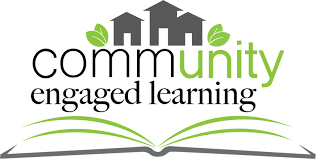Empowering Communities Through Community Engaged Learning

Community Engaged Learning: Building Stronger Communities Through Education
In recent years, the concept of community engaged learning has gained traction as a powerful educational approach that benefits both students and the communities they serve. Community engaged learning goes beyond traditional classroom teaching by actively involving students in real-world projects and initiatives that address community needs and challenges.
At its core, community engaged learning is about fostering meaningful partnerships between educational institutions and local communities. Students have the opportunity to apply their academic knowledge and skills to practical situations, gaining valuable hands-on experience while making a positive impact on society.
The Benefits of Community Engaged Learning
Community engaged learning offers a range of benefits for all involved:
- Learning through Experience: Students gain practical experience, develop critical thinking skills, and enhance their problem-solving abilities by working on real-world projects.
- Building Empathy and Understanding: By engaging with diverse communities and addressing social issues, students develop empathy, cultural awareness, and a deeper understanding of societal challenges.
- Creating Positive Change: Community engaged learning empowers students to make a difference in their communities, fostering a sense of social responsibility and civic engagement.
- Fostering Collaboration: By collaborating with community members, organisations, and stakeholders, students learn the value of teamwork, communication, and partnership building.
Examples of Community Engaged Learning Projects
Community engaged learning can take many forms, including:
- Environmental Conservation Projects: Students work with local environmental groups to clean up parks, plant trees, or raise awareness about sustainability issues.
- Social Justice Initiatives: Students collaborate with advocacy organisations to address social inequalities, promote diversity and inclusion, or support marginalized communities.
- Educational Outreach Programs: Students volunteer at schools or community centres to provide tutoring, mentorship, or educational workshops for children and adults.
- Healthcare Campaigns: Students partner with healthcare providers to organise health fairs, conduct screenings, or raise awareness about public health issues.
In conclusion, community engaged learning is a transformative educational approach that empowers students to become active agents of change in their communities. By combining academic learning with hands-on experience and community engagement, we can build stronger communities that thrive on collaboration, empathy, and social responsibility.
Understanding Community Engaged Learning: Key Concepts and Examples
- What is an example of community engaged learning?
- What is community engagement learning?
- What are the goals of community engaged learning?
- What is community engagement approach?
- What is an example of community engagement?
What is an example of community engaged learning?
An example of community engaged learning is a university partnership with a local primary school to implement a literacy programme. In this scenario, university students studying education work closely with primary school teachers to develop and deliver reading workshops for young students. Through this collaborative effort, university students gain practical teaching experience, while primary school children benefit from additional support to improve their literacy skills. This hands-on approach not only enhances the learning experience for both groups but also strengthens the bond between the university and the local community, demonstrating the positive impact of community engaged learning initiatives.
What is community engagement learning?
Community engaged learning is a dynamic educational approach that goes beyond traditional classroom settings to actively involve students in real-world projects and initiatives that address community needs. It is a collaborative process that fosters meaningful partnerships between educational institutions and local communities, allowing students to apply their academic knowledge and skills to practical situations. Community engaged learning not only enhances students’ understanding of societal challenges but also empowers them to make a positive impact by working alongside community members, organisations, and stakeholders. By bridging the gap between theory and practice, community engaged learning nurtures a sense of social responsibility, empathy, and civic engagement among students while contributing to the development of stronger, more resilient communities.
What are the goals of community engaged learning?
The goals of community engaged learning encompass fostering meaningful partnerships between educational institutions and local communities, empowering students to apply their academic knowledge and skills to real-world challenges, promoting social responsibility and civic engagement, enhancing students’ critical thinking and problem-solving abilities through hands-on experience, cultivating empathy and cultural awareness by engaging with diverse communities, and creating positive change by addressing societal issues collaboratively. Ultimately, the overarching aim of community engaged learning is to build stronger communities through education that benefits both students and the society they serve.
What is community engagement approach?
A community engagement approach is a collaborative and participatory method that involves actively involving community members in decision-making processes, project planning, and implementation. It aims to build strong relationships between institutions and the communities they serve, fostering trust, mutual respect, and shared responsibility. Community engagement goes beyond traditional outreach efforts by prioritising the voices and needs of community members, empowering them to shape the direction of initiatives that directly impact their lives. By embracing a community engagement approach, organisations can create meaningful partnerships, address social issues effectively, and work towards building inclusive and sustainable communities for all.
What is an example of community engagement?
An example of community engagement is a university partnering with a local primary school to establish a reading programme where university students volunteer to read to children on a regular basis. This initiative not only promotes literacy and a love for reading among young learners but also fosters positive relationships between the university and the community. Through this collaborative effort, both the university students and the school children benefit from meaningful interactions that contribute to the overall well-being of the community.
